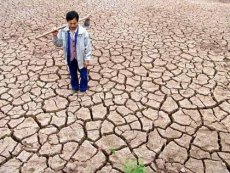New publications
Changing the circulation of the world's oceans has the potential to cause significant climate change
Last reviewed: 30.06.2025

All iLive content is medically reviewed or fact checked to ensure as much factual accuracy as possible.
We have strict sourcing guidelines and only link to reputable media sites, academic research institutions and, whenever possible, medically peer reviewed studies. Note that the numbers in parentheses ([1], [2], etc.) are clickable links to these studies.
If you feel that any of our content is inaccurate, out-of-date, or otherwise questionable, please select it and press Ctrl + Enter.

There have been times in Earth's history when the average surface temperature of the planet has jumped by ten degrees in a matter of decades, and a number of scientists believe that something similar is in store for us due to the pumping of carbon dioxide into the atmosphere.
The new study, however, supports those who believe that the cause of the sharp warming, etc., lies in changes in ocean circulation. "It is possible that mechanisms for greenhouse gases to cause such sharp changes do exist, but the geological record does not tell us anything about it," says study co-author David Battisti from Washington State University (USA).
A group of scientists modeled the so-called Heinrich events that took place during the last ice age 110-10 thousand years ago. We are talking about the mass formation of icebergs in the North Atlantic. They carried with them material that became part of the glaciers as they moved across the land. The icebergs melted, the material sank to the bottom, and its presence in the sediments allows scientists to reconstruct the history of those distant years.
The experiment added an oxygen isotope model to the many climate models to determine the cause of the climate shifts that had already been recorded; previous analyses of oxygen isotope ratios in carbonate deposits in China and India had shown that monsoon intensity in those regions varied dramatically. The modeling was based on these isotope ratios.
It turned out that a sudden increase in sea ice in the North Atlantic cooled the Northern Hemisphere, including the surface of the Indian Ocean, which led to reduced rainfall in India and weakened the Indian monsoon, but did not have much of an effect on East Asia.
Mr Battisti points out that while carbon dioxide-driven climate change is unlikely to be abrupt, some things do happen very quickly. For example, if an ecosystem loses a keystone species, it can change in an instant. A gradual retreat of sea ice can lead to rapid warming within a few thousand kilometres of the coast. If warming slowly drains a semi-arid region, fires become more frequent.

 [
[